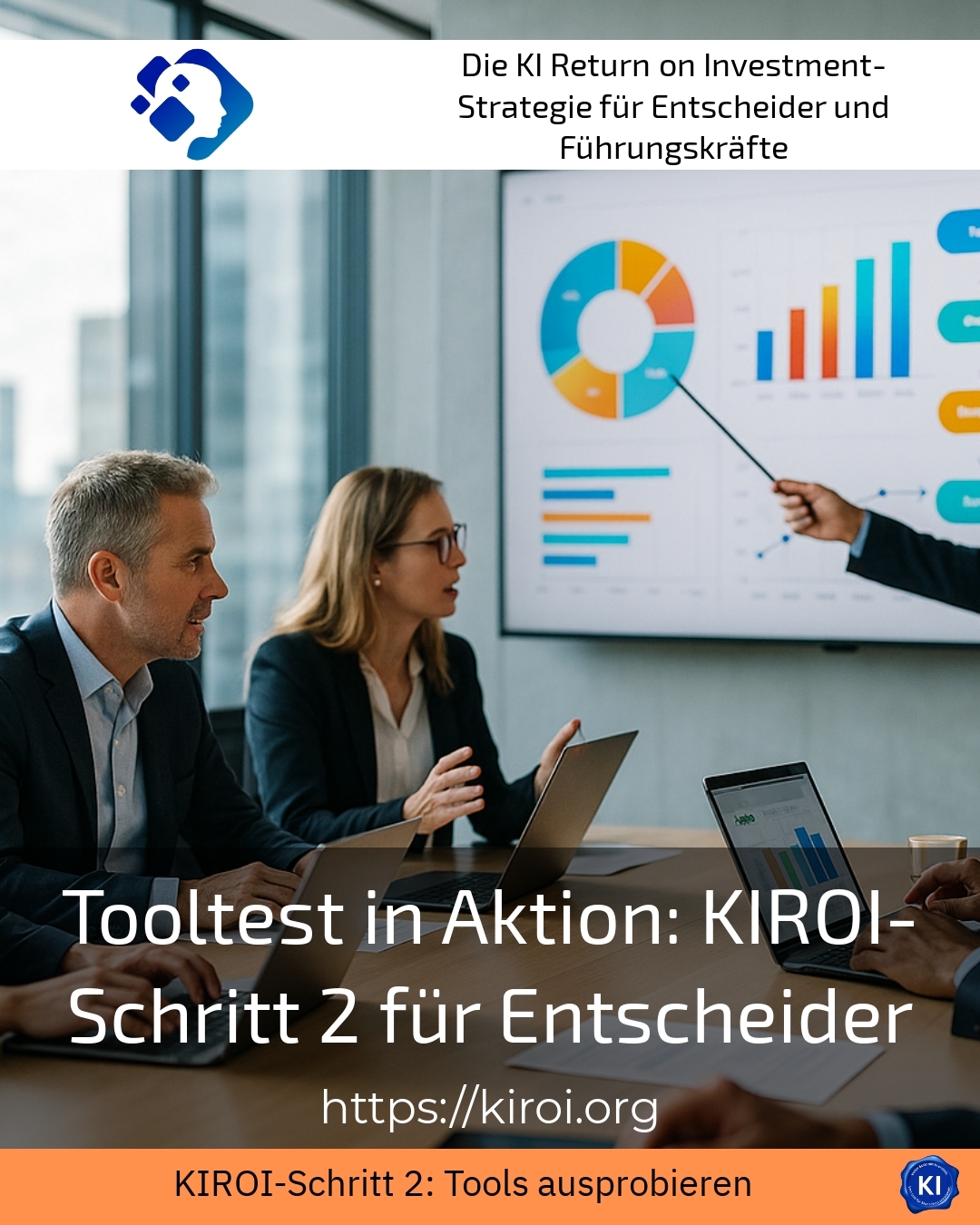As part of the digital transformation, the targeted Tooltest is becoming increasingly important. For decision-makers in particular, KIROI Step 2 with the Tooltest a structured way of systematically testing AI-based tools and customising them precisely to the respective company requirements. The aim is not only to evaluate the practical relevance, user-friendliness and integration suitability of the tools superficially, but also to put them through their paces in realistic scenarios.
Practical evaluation in the tool test for decision-makers
The Tooltest begins with a precise analysis of individual requirements. Decision-makers clearly define the use cases so that the tests can be tailored to specific, practical situations. In the manufacturing industry, for example, tests are carried out to determine how AI-controlled quality inspection systems can recognise defects and document them in a reliable process. In IT-supported service processes, the focus is often on the automation of routine tasks, while in the financial sector, AI tools are used to test the accuracy and reliability of risk analyses.
Only by mapping realistic scenarios can it be shown whether the tools actually support everyday work or whether there are weaknesses in operation or integration. The Tooltest is not a one-off action, but an iterative process with several test cycles to enable continuous optimisation and adjustments.
BEST PRACTICE with one customer (name hidden due to NDA contract)
An AI-based maintenance software was trialled in a medium-sized manufacturing company as part of the tool test. The support provided by transruptions coaching helped to define clear objectives and systematically analyse the test results. This allowed technical challenges to be recognised early on and detailed adjustments to be made before the system was implemented under real conditions. Employees reported a noticeable increase in process reliability and a high level of acceptance of the solution.
Success factors for a robust tool test
An effective Tooltest integrates different specialist areas at an early stage: IT experts, management and the operational teams regularly exchange information. This creates a holistic picture that combines technical possibilities and organisational framework conditions. Users provide valuable feedback that helps to increase user-friendliness and acceptance.
Transparent documentation and comprehensible evaluation criteria are also crucial. The systematic recording of all test results creates a sound basis for decision-making. In this way, companies avoid bad investments and promote sustainable acceptance of new technologies.
For example, a media company used the tool test to compare different AI-supported text creation tools. The focus was on text quality, customisability and workflow integration. The structured approach led to a high level of team acceptance and successful implementation in everyday editorial work. A service provider in the healthcare sector also tested various documentation solutions. The decisive factor here was ease of use combined with high data security in order to provide users with the best possible support. In the logistics sector, on the other hand, the focus was placed on the integration of route planning tools that record real-time data and can react flexibly to changes.
Valuable impulses through transruption coaching
transruptions coaching supports companies with projects relating to the Tooltest. It helps to clearly formulate requirements, make test processes transparent and promote communication between those involved. In this way, unnecessary stumbling blocks are recognised and eliminated at an early stage. In addition, the coaching motivates the teams to pragmatically transfer the knowledge gained into their day-to-day work in order to ensure sustainable utilisation.
In the retail sector, for example, the coaching helped to test various AI tools for demand forecasting in practice. The tests showed which tools deliver reliable forecasts, taking seasonal fluctuations into account. At the same time, the user-friendliness for employees was evaluated in order to promote broad acceptance. Such practical examples illustrate how closely consulting and structured testing are interlinked.
Tool test as a key element for well-founded decisions
In KIROI step 2, the Tooltest an indispensable step in making technology-orientated decisions based on facts and across departments. Those who approach this hurdle with a methodological framework benefit from:
- More clarity about the suitability of software solutions in practical use
- better insights through realistic application tests
- Higher user acceptance through early involvement and feedback
- Improved resource efficiency through targeted iterations and adjustments
Companies that use the Tooltest The companies that implement digitalisation in a serious and structured manner often report a noticeable optimisation of their processes and an increase in competitiveness. At the same time, the cost of introducing new digital technologies can be reduced because critical weak points are recognised and eliminated in good time.
My analysis
The Tooltest in KIROI Step 2 helps managers to identify and successfully implement the right digital tools for their individual requirements. By focussing on practical tests and the structured involvement of relevant stakeholders, a reliable basis for decision-making is created. The combination of technical, organisational and user-oriented aspects makes the Tooltest an important tool for sustainable digitalisation projects.
The close integration with transruption coaching in particular gives decision-makers the confidence to master the complexity of tool selection and promote innovation in a targeted manner. The wide range of industry experience shows that a well-organised Tooltest stimuli for more efficient processes, greater acceptance and long-term success.
Further links from the text above:
KIROI step 2: Tool test - How decision-makers test AI solutions
Tooltest: Successfully try out AI tools with KIROI Step 2
Tool test in KIROI step 2: How decision-makers find the best
Tool test in KIROI step 2: How decision-makers find the best AI solutions
Tool test in KIROI step 2: How decision-makers get started
For more information and if you have any questions, please contact Contact us or read more blog posts on the topic Artificial intelligence here.















